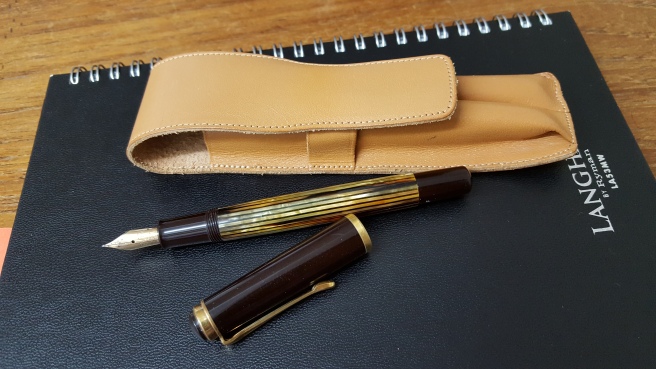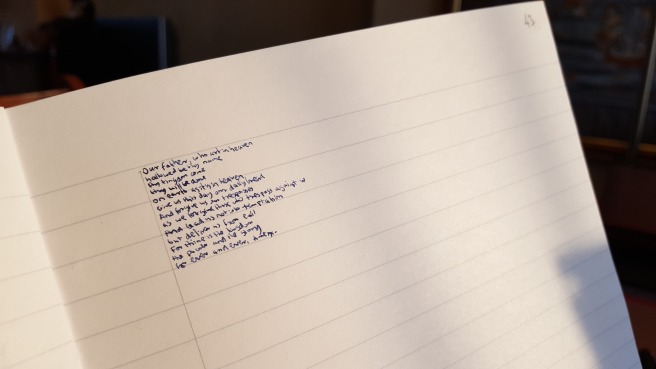
This week I performed my first successful transplant on an elderly tortoise. Or was it a pelikan?
That is to say, I have given my recently acquired and much prized, Pelikan M400 vintage tortoise, a new nib. The one that it arrived with was a Rover, 14k gold, extra fine, which had wonderful flex to it and was great fun to experiment and doodle with. On removing this, the full inscription on the nib could be seen as Rover 585 EXTRA PO.45. I had wrongly assumed that the concealed lettering beneath the “EXTRA” would say “FINE” and had not guessed that it would say PO.45.
I do not have any information on Rover nibs and would be interested to know when and where they were made. I believe my pen dates from the early 1950’s and it has not yet yielded up all its secrets, nor is it likely to. It would be fascinating to know who had owned it and where it has been all my life. All I know is that it arrived at Hampstead Auctions, had been well cared for and had vestiges of a blue ink from its last use.
Much as I enjoyed this nib, it was not well suited to my way of writing. I found that I could write in an upright hand, quite smoothly, but if writing in my more usual slanting style and with any speed, the soft extra fine nib was rather scratchy. Not a pen to be rushed.
As I wanted to use the pen at home for letter writing and journaling and so forth, it seemed a good idea to acquire an additional nib and I ordered a modern Pelikan Fine, M200 stainless steel nib in the gold-coloured finish, from The Writing Desk. Yes, I know this sounds like a downgrade, but it is a Pelikan nib, it is the right colour, Pelikan stainless steel nibs are excellent (in my limited experience and from what I have read), plus it was an economical way of adapting the pen for regular practical use.
The new nib arrived within three working days and I was impressed and grateful that it had been checked and tested. A test card was signed and dated – a great service for a modest order and really helpful when buying online.
This time, my pen was already inked, with Conway Stewart Tavy from Diamine as I unscrewed the nib with its fragile ebonite feed unit and replaced it with the Fine nib with its modern plastic feed, carefully keeping the pen upright. It is more accurate to say that I held the nib and feed still, firmly gripped in tissue paper, while unscrewing the barrel from the nib. Having done this once already, it came out easily and the new stainless steel nib went in perfectly. Both pen and nib are doing well.
I am delighted with my choice. The Pelikan Fine seems to be nicely proportioned to my size of writing. I have generally thought of myself as a Medium nib person, but over the years as my writing has become faster and less legible, all the loops tend to get inked in and it is a treat to see some white space back in them again.

Admittedly the pen is still new to me, but at present I get a buzz at every opportunity to pick it up and write something with it.
My only other Pelikan stainless steel nib is on my M205 blue demonstrator from 2016 with which I chose a Broad which is beautifully smooth and one of the nicest nibs that I have ever used.
With its capacity of around 2ml, I expect one fill of ink to last me ages. Even in the M205 with its Broad nib, I got over 50 pages of an A5 notebook to one fill and so with a fine nib, I can expect a fair bit more than that. The extra fine nib might give double that mileage, so long as I do not get carried away with the broad wet flourishes that are readily available on applying a little pressure.
I did find that on the vintage M400, the cap did not post firmly. It rests on the back of the barrel quite deeply, to over half its length but did not grip and so tended to slide about. This was very easily remedied, simply by tucking a scrap of paper in the cap when posting, about half the size of a postage stamp and the problem is solved instantly. As I said, the pen is elderly. One has to make some allowances and treat it with care and respect.













